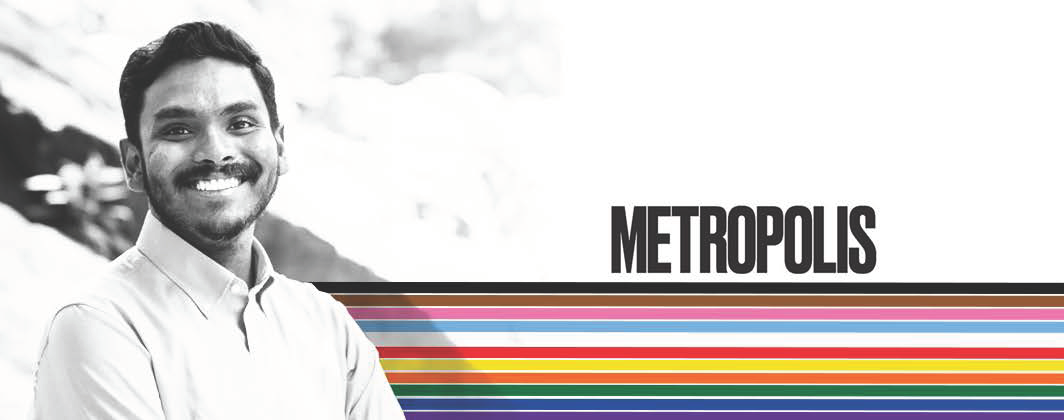
To celebrate Pride Month in June, Perkins Eastman’s Diversity, Equity & Inclusion Initiative hosted a week-long series of virtual events in June bringing queer issues to light. Conceptualized, planned, and led by our employees, the proceeds of our activities benefited the Audre Lorde Project and the National Black Trans Advocacy Coalition.
Avinash Rajagopal, editor-in-chief of Metropolis magazine, gave us a personal, yet industry-focused answer to the question “What Does Pride Mean Today?” during one of those events, a virtual, public conversation with Perkins Eastman’s Mark Muster. Discussing race in the LGBTQ+ community, queerness in design, and how we can forge a more inclusive and intersectional architectural landscape, Avi, who identifies as gay and as a person of color, shared his unique perspective as a design industry thought leader.
“It may seem like such an obvious thing to say, but we forget that just being in public was our protest…for so many years being in public was our way of being queer,” Avi said.
In the city he calls home, New York, the country’s largest annual Pride parade was started in 1970 to commemorate the Stonewall Riots in 1969. Today, with hefty sponsorships and participation that extends far beyond New York City, the parade follows a planned route, diverting traffic, and inviting public engagement — it makes itself known — to honor the continued fight for LGBTQ+ rights. It has become a formal, public event, permitted to take place on the streets of a large swath of Manhattan’s west side.
The relationship between activism and space extends throughout modern history. While the annual Pride parade in New York City is now formalized, it didn’t start out that way.
“If you look at protests, the protests that make the news, that break the mold, they are about ‘queering’ spaces,” Avi said. “They are about taking over spaces and using them for purposes that they were not intended to be used for.”
Parts of the Suffragette movement, the sit-ins of the Civil Rights Movements, and Vietnam era, and protests for LGTBQ+ rights — those events historically occupied spaces against their original design intent, bringing weight to and public focus on injustice.
Queering spaces is also a way of queering architecture, Avi notes.
“Much of the architecture and design field is involved in designing what spaces should look like and how they should be used,” Avi said, adding that queering spaces — i.e. potentially using them for unanticipated activities — is something designers should stay open to, “We are in desperate need of the queering of the field of architecture.”
But the ability to queer public space is shrinking, “There’s an on-going movement in cities around the world to designate areas of protests,” Avi reported. “And yet, by definition, protest spaces cannot be defined, they cannot be controlled or sanitized.” To mandate areas of protest as a response to widespread chronic unrest undermines the power of these protests and works to silence the demands of movements like BLM. It’s clear, planning spaces for protest is the opposite of queering architecture. He challenged designers to think critically about our industry’s own problems with diversity, equity, and inclusion and how to push it toward a better future.
Avi believes we need to “start listening to queer people while we rightfully look for more representation and opportunities for queer people, for Black people, for other BIPOC people, and for women in architecture and design. If we offer employment but don’t listen to their voices we fail, and we fail in the worst way possible.”
It is vital for our industry to better open itself up to minority and queer voices. While more diversity in the field is imperative, it is not enough. Architecture and design need to reach out to and better include those same voices, not just in June for Pride month, but in every month, in every day of the year.